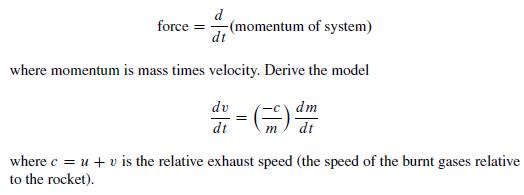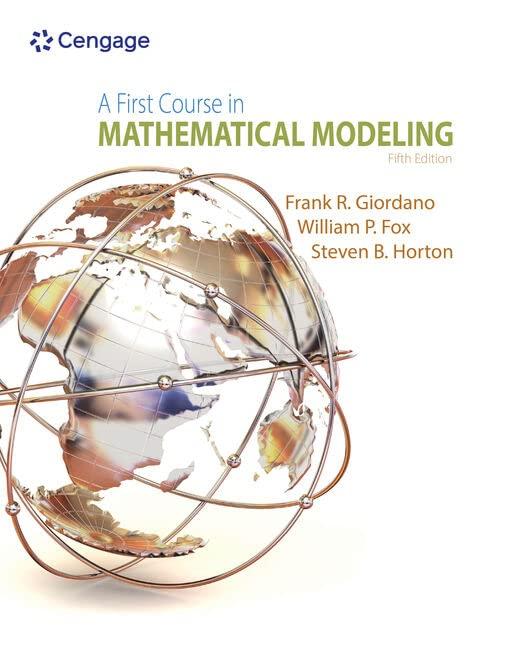Consider launching a satellite into orbit using a single-stage rocket. The rocket is continuously losing mass, which
Question:
Consider launching a satellite into orbit using a single-stage rocket. The rocket is continuously losing mass, which is being propelled away from it at significant speeds. We are interested in predicting the maximum speed the rocket can attain.2
a. Assume the rocket of mass m is moving with speed v. In a small increment of time Δt it loses a small mass Δmp, which leaves the rocket with speed u in a direction opposite to v. Here, Δmp is the small propellant mass. The resulting speed of the rocket is v + Δv. Neglect all external forces (gravity, atmospheric drag, etc.) and assume Newton's second law of motion:

b. Assume that initially, at time t = 0, the velocity v = 0 and the mass of the rocket is m = M + P, where P is the mass of the payload satellite and M = ∈M +(1–∈) M (0 M plus the mass (1–∈) M of the rocket casings and instruments. Solve the model in part (a) to obtain the speed:

c. Show that when all the fuel is burned, the speed of the rocket is given by:

d. Find vf if c = 3 km/sec, ∈ = 0.8, and β = 1/100. (These are typical values in satellite launchings.)
e. Suppose scientists plan to launch a satellite in circular orbit h km above the earth's surface. Assume that the gravitational pull toward the center of the earth is given by Newton's inverse square law of attraction:

where r is the universal gravitational constant,mis the mass of the satellite,Me is the earth's mass, and Re is the radius of the earth. Assume that this force must be balanced by the centrifugal force mv2/(h + Re), where v is the speed of the satellite. What speed must be attained by a rocket to launch a satellite into an orbit 100 km above the earth's surface? From your computation in part (d), can a single-stage rocket launch a satellite into an orbit of that height?
Step by Step Answer:

A First Course In Mathematical Modeling
ISBN: 9781285050904
5th Edition
Authors: Frank R. Giordano, William P. Fox, Steven B. Horton





